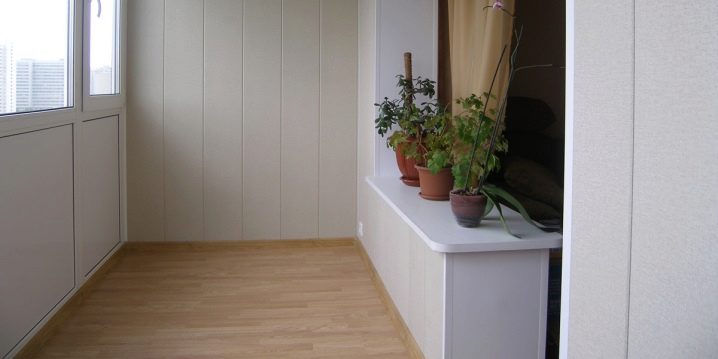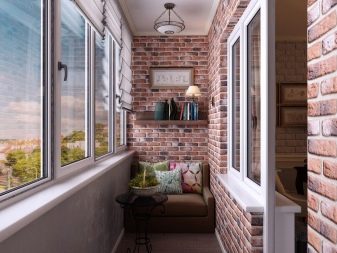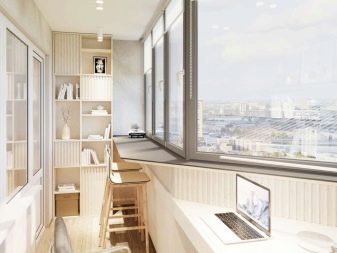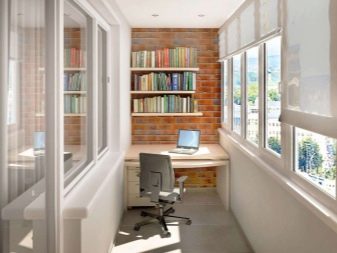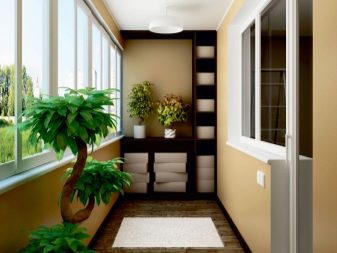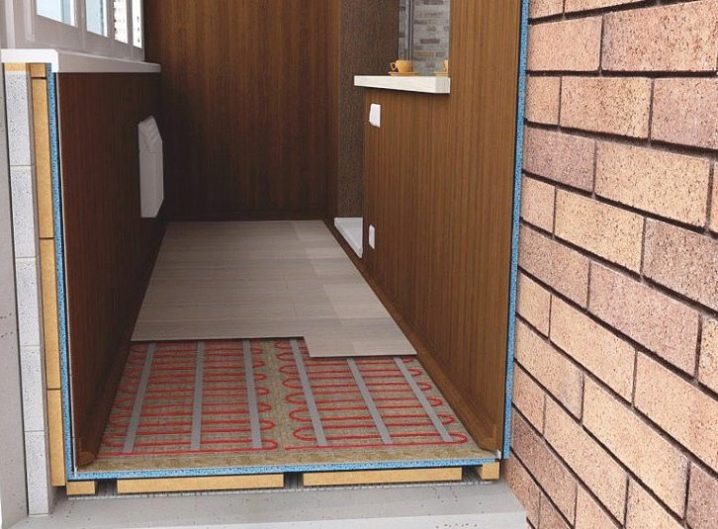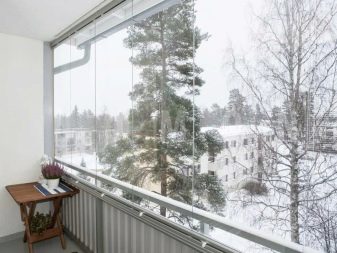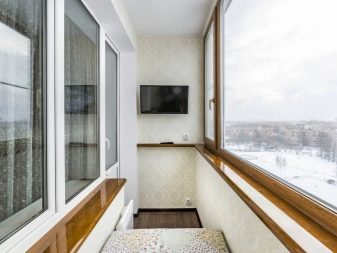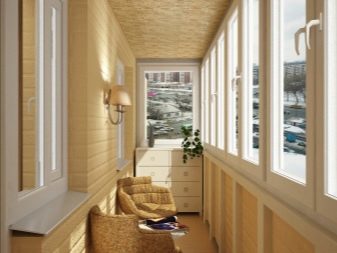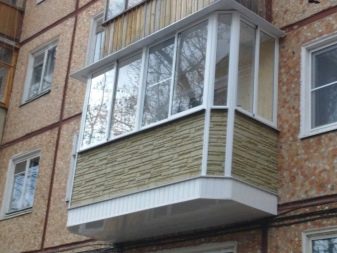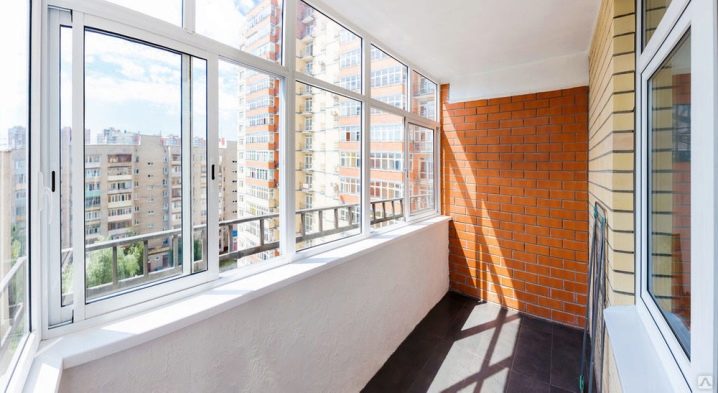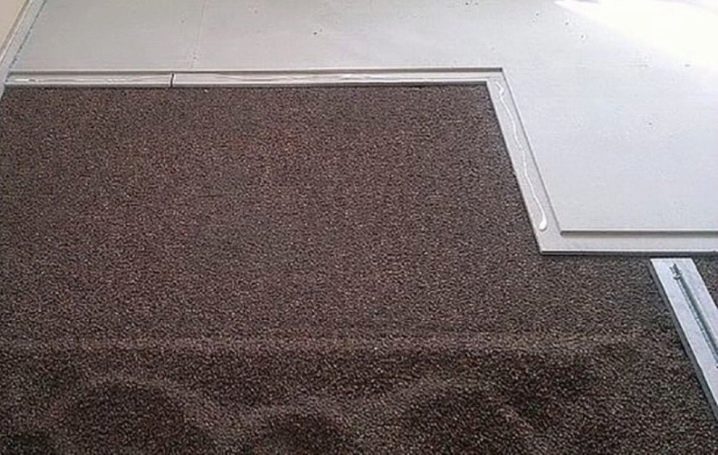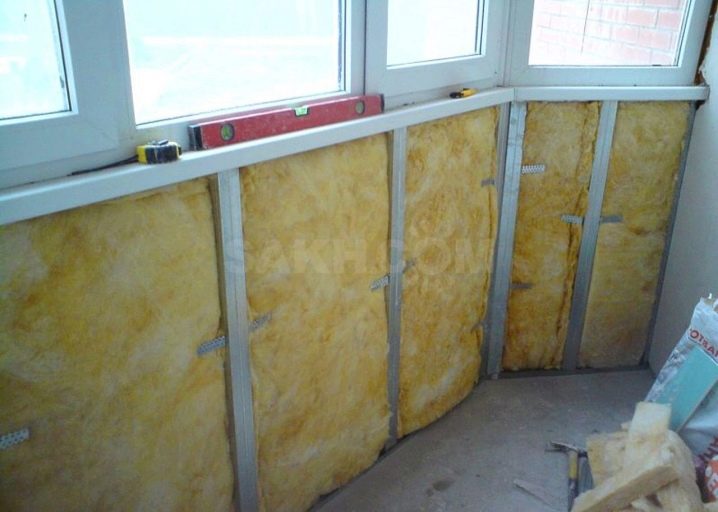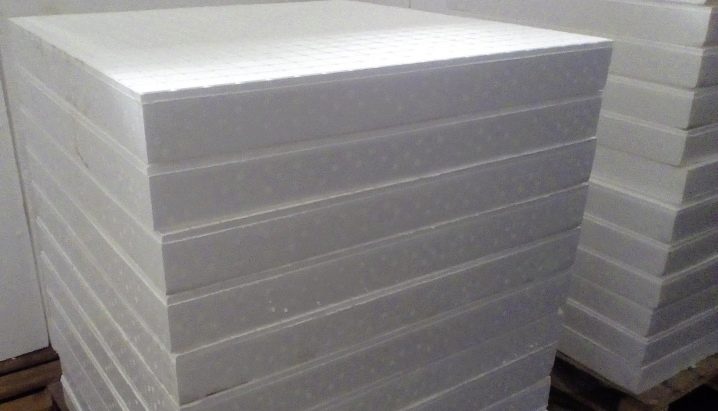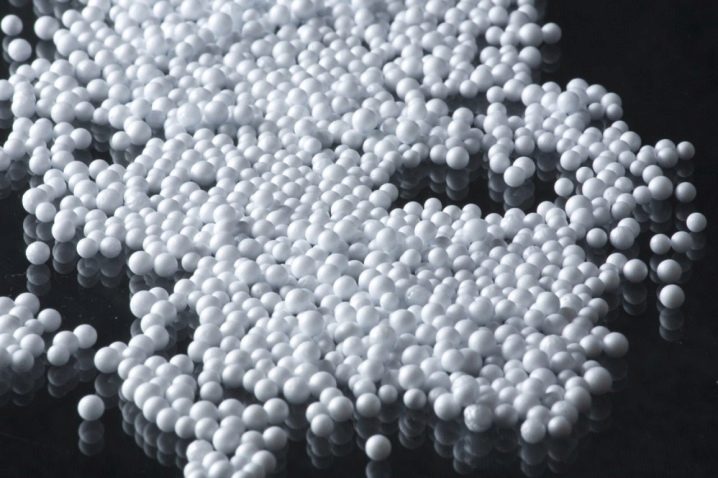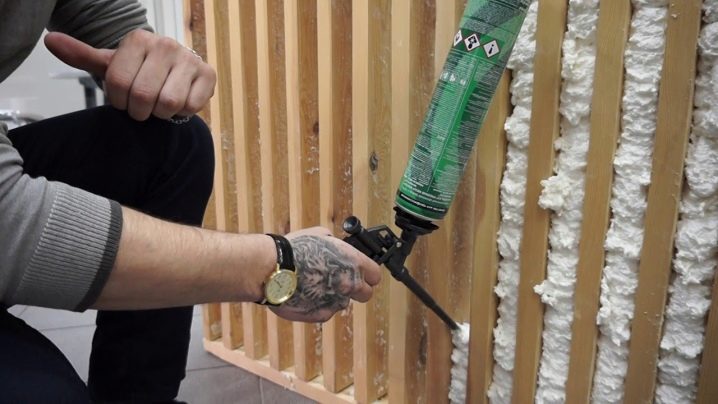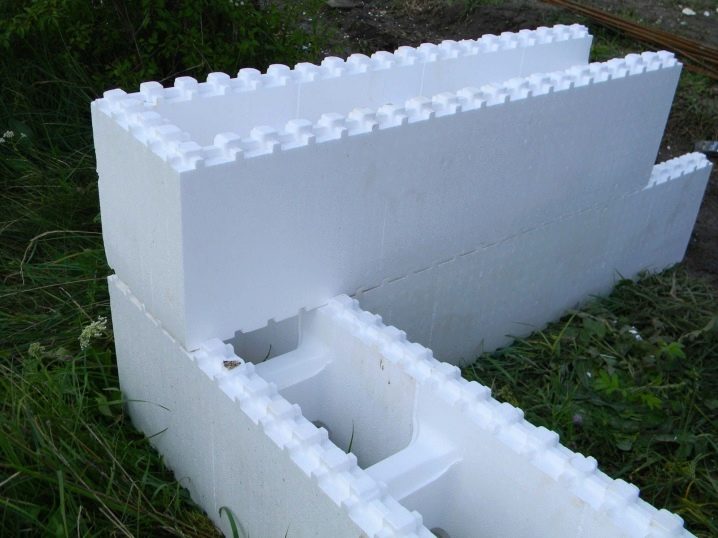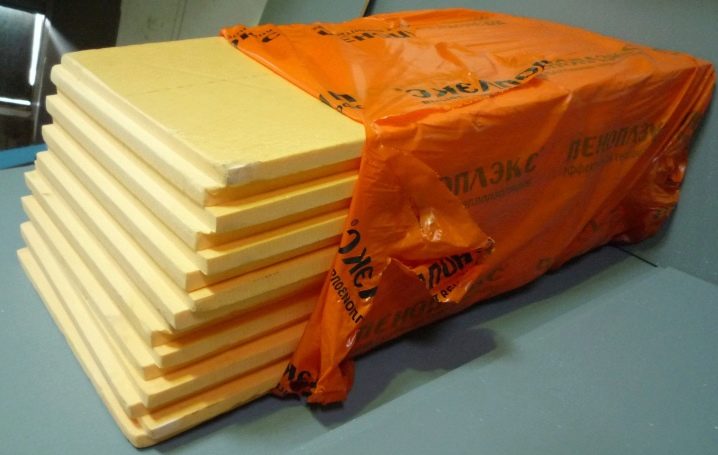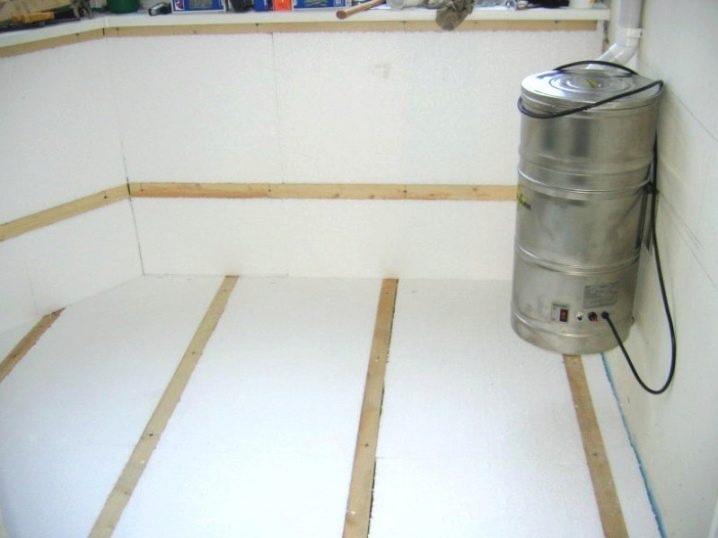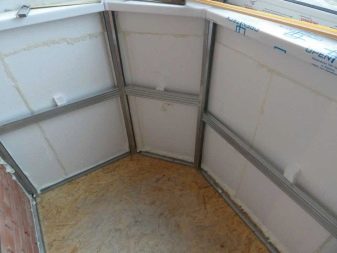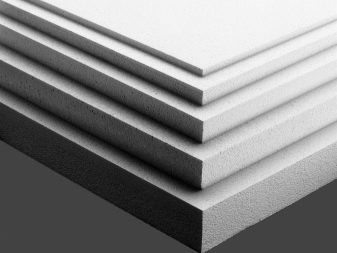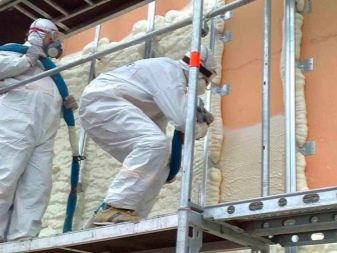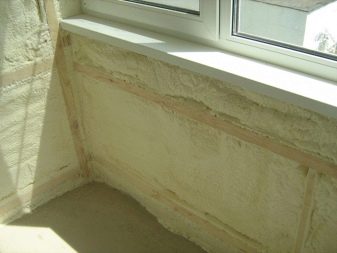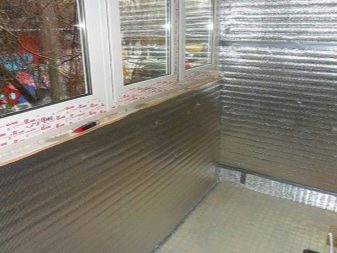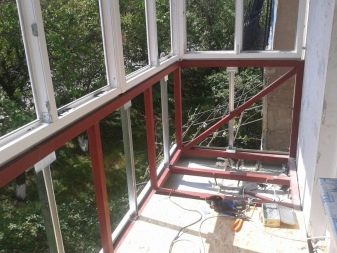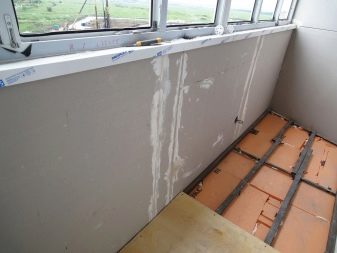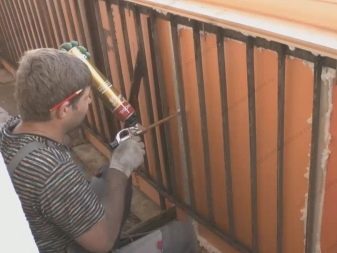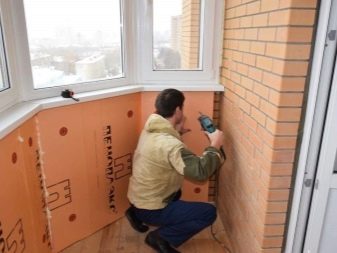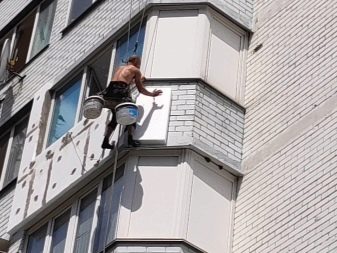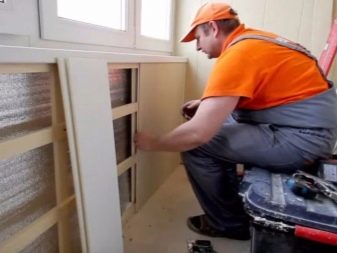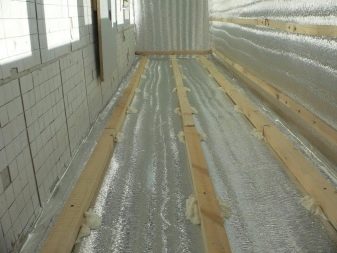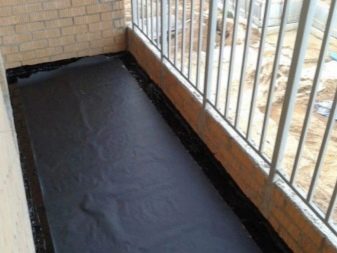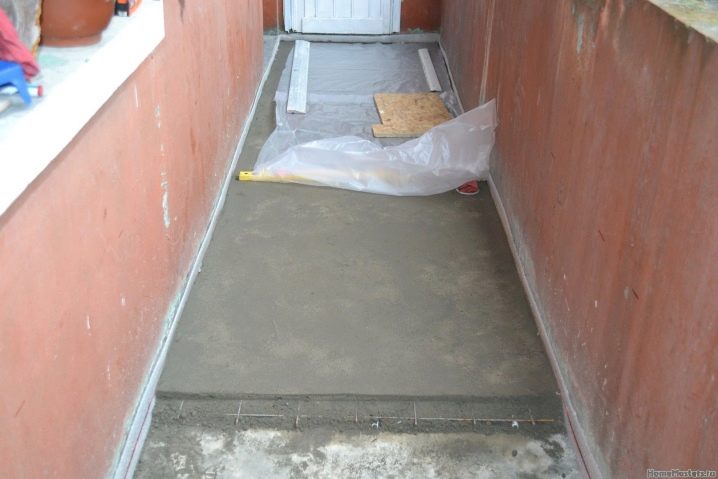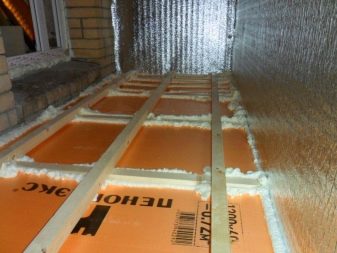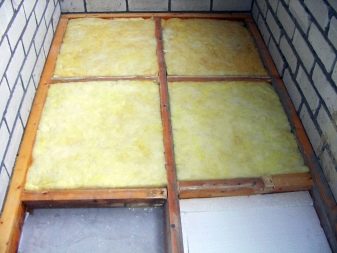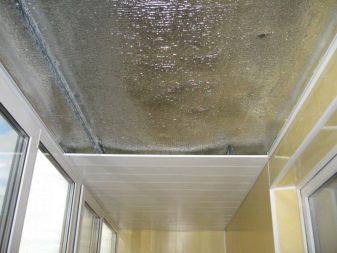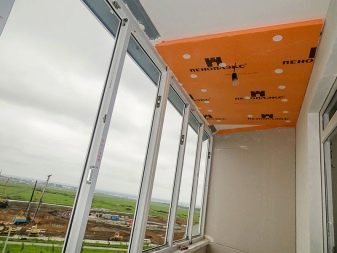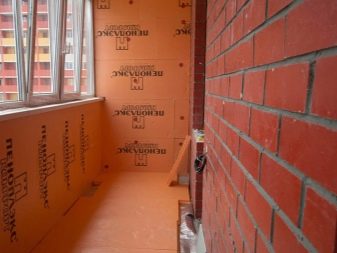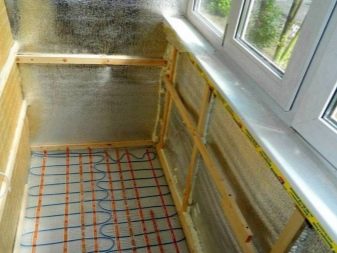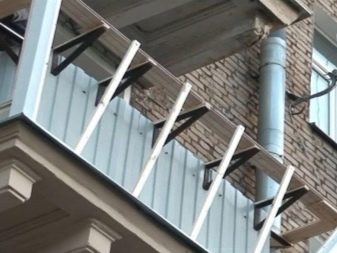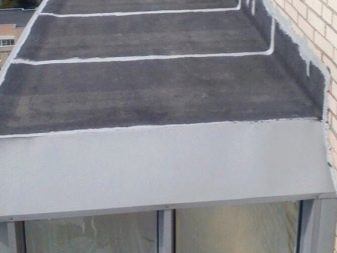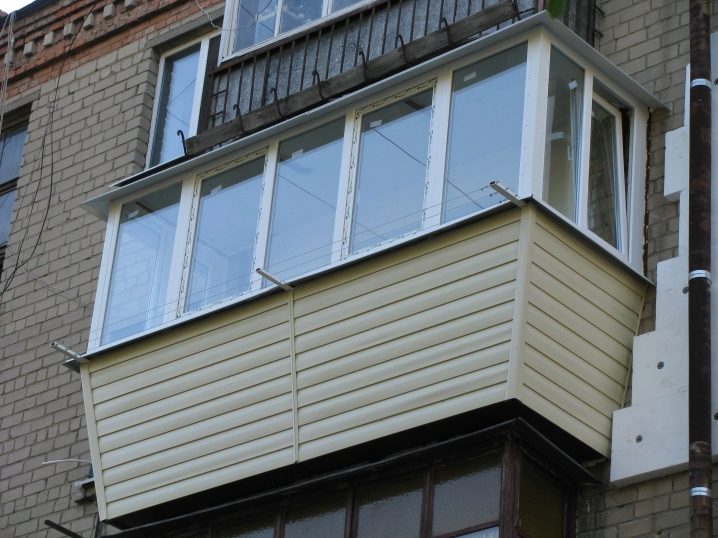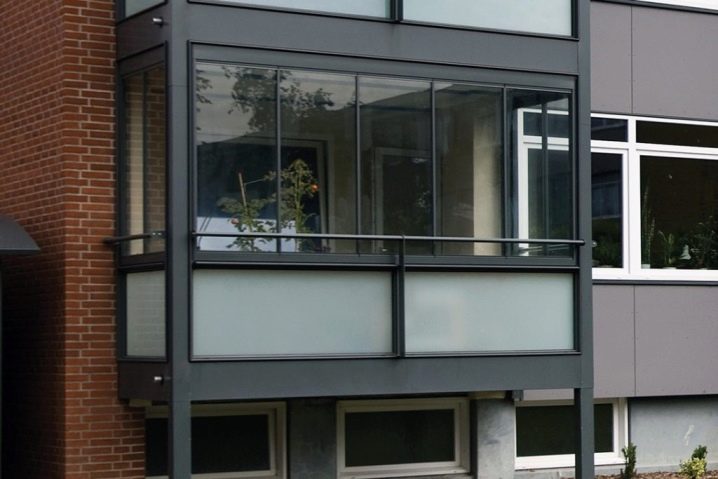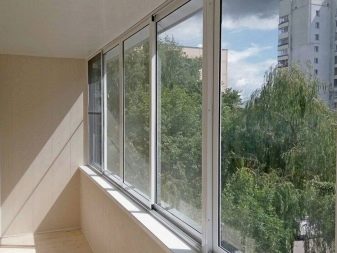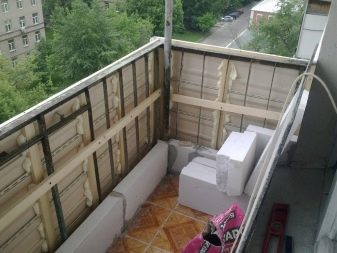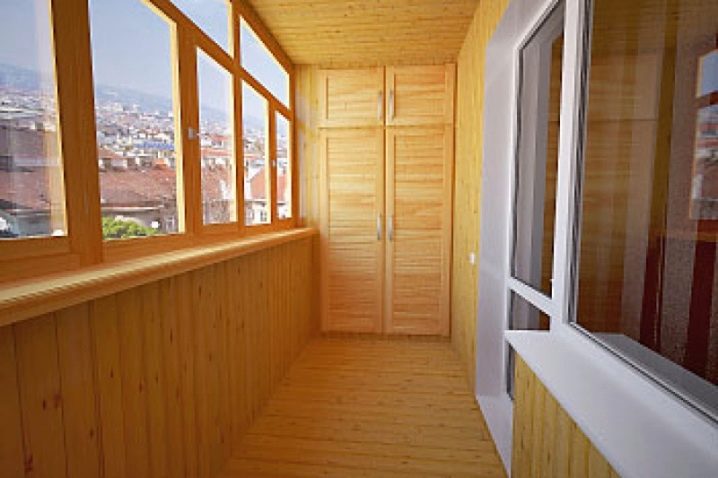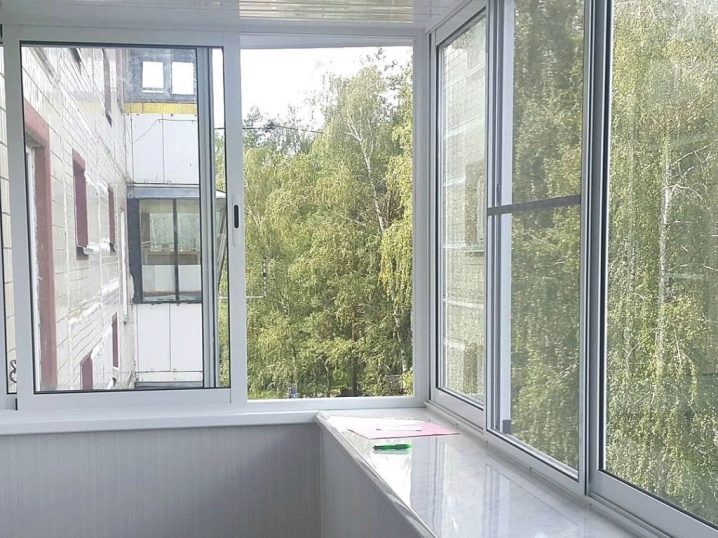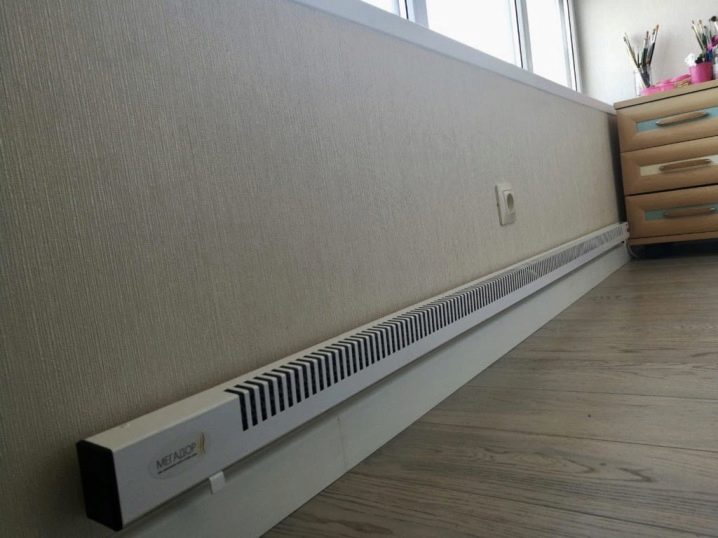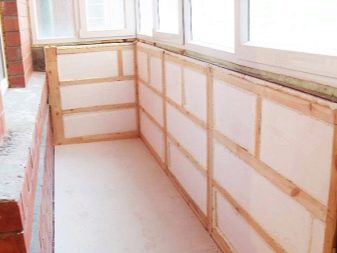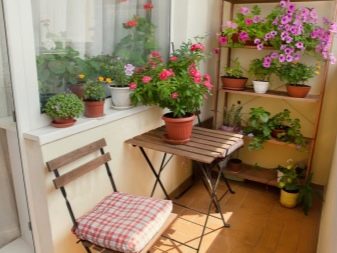All about the insulation of the balcony
The balcony is a unique part of the apartment, the use of which is initially possible only in the warm season. In winter, it is almost as cold as it is outside. In post-Soviet times, at this time of the year, the balcony was used as a storage room and a winter refrigerator, but today's technology has given a new look at this part of the apartment space.
Advantages and disadvantages
Insulation of balconies allows you to supplement a room opening onto a balcony with a small space in which you can arrange a winter garden, a place to relax, even a small office. In addition, there are several more advantages:
- increased insulation - the insulated balcony noticeably mutes street noise and serves as additional thermal insulation;
- extended functionality - a warm balcony turns into a small, but full-fledged room;
- design variability - the ability to arrange a separate area, guided by the need and preferences;
- reducing the level of fire hazard - after all, a lot of rarely used things are stored on the cold balcony, on the warm one there is none.
The disadvantages are:
- weighting - since this cannot be avoided, an examination of the balcony and permission from a number of authorities are needed before reconstruction;
- cost - it is usually high, but if you do everything yourself, you can significantly reduce costs;
- increased power consumption - to heat the room, you will have to install underfloor heating or heaters;
- reduction in area - the already limited area of the balcony will be reduced with internal insulation.
In addition, the installation of additional windows reduces the amount of natural light.
Materials (edit)
In winter, it is almost impossible to be on the balcony, but this is fixable, and the goal of most apartment owners is to insulate it. It is much more convenient to admire the trees covered with frost, a mesmerizing blizzard, and a frosty sunny day from a warm balcony than to look out of the window. Thanks to the new features, you can easily do it yourself.
Today there are a huge number of options for how and with what to insulate the external space from the inside and outside. The decision on which method to use can be made, taking into account several factors:
- type of building;
- climatic zone;
- own desires;
- planned expenses;
- features of finishing materials.
The existing assortment of finishing materials forces you to at least superficially familiarize yourself with the purpose and capabilities of each of them in order to understand which one is most suitable for specific purposes. This will help you choose the necessary tools, insulation, profile, double-glazed windows.
Let's consider several types of materials for a brief introduction.
Expanded clay
It is environmentally friendly and safe because it is made of clay. Lightweight porous granules provide heat and sound insulation.
Its advantages:
- light weight;
- fire safety;
- budgetary cost;
- corrosion resistance;
- good wear resistance.
The disadvantages include:
- complexity of installation;
- moisture permeability;
- limited use.
Expanded clay is intended for warming floors, sometimes the foundation.
Mineral wool
The most demanded insulation. Outwardly, it looks like a thick soft cloth, resembling a blanket, consisting of many randomly interwoven fibers. The raw materials for mineral wool are slag, glass and rocks.
To connect the fibers with each other, impregnation with special compounds is used - a mixture of oils and industrial alcohol. The insulation itself is divided into several subspecies:
- stone wool (basalt);
- glass wool (glass, limestone);
- slag wool (blast furnace slag).
Benefits of mineral wool:
- ease of installation;
- vapor permeability;
- Fire safety;
- weak thermal conductivity;
- no deformation during temperature changes.
The disadvantages include high moisture permeability - it is fought with special water-repellent compounds.
Styrofoam
One of the lightest thermal insulation materials. It is a foamed mass, 90% filled with air. The use of this technology allows you to achieve a good result and high-quality insulation of premises, including balconies. The high popularity of insulation is explained by a significant assortment:
-
sheet;
-
granulated;
-
liquid foam;
-
foam formwork;
- extruded polystyrene foam.
Its advantages:
- low price;
- light weight;
- ease of installation;
- versatility in use;
- long service life - up to 30 years;
- high thermal insulation properties;
- resistance to mold and bacteria;
Disadvantages:
- moisture permeability;
- low vapor barrier;
- high toxicity during combustion;
- reaction to exposure to UV rays.
In addition, the foam is too soft and deforms easily from mechanical and chemical stress.
Expanded polystyrene
Today it is in high demand - many people prefer to choose this particular material for insulating a balcony. Expanded polystyrene is lightweight and has good thermal insulation. When comparing foam and expanded polystyrene, common features and distinctive characteristics can be noted, for example, expanded polystyrene has a smoother texture.
Advantages:
- good strength;
- fire safety;
- high environmental friendliness and ease of installation;
- resistance to high and low temperatures;
- low vapor permeability and thermal conductivity;
- waterproof (this allows it to be used as waterproofing).
Among the disadvantages are weak vapor barrier, high cost and instability to UV rays. Its use entails additional costs for organizing the frame, purchasing glue.
Polyurethane
Polyurethane, also called polyurethane foam, is made from a special type of plastic with a foam structure. Like several other insulation materials, polyurethane is 90% made of a gaseous substance that fills its cellular structure. Advances in technology have made it possible to create two types of polyurethane:
- elastic - foam rubber;
- hard - for heat and sound insulation.
The advantages of polyurethane:
- a light weight;
- fire safety;
- cooperates in tandem with any material;
- well strengthens the formed surface;
- has good resistance to sudden temperature changes.
Unfortunately, it was not possible to do without drawbacks, but they are not so significant as to abandon the insulation.
It does not have good resistance to sunlight, does not burn, but smolders. Because of this, polyurethane foam is not installed in rooms with a high fire hazard.
Penofol
The result of innovative developments. Penofol consists of several layers:
- aluminium foil;
- foamed self-extinguishing polyethylene.
The material "works" according to a different principle than the previous ones - it reflects rather than absorbs heat. Such an opportunity was given to him by the foil layer. It is divided into three types:
- "A" - foiling on one side;
- "B" - foiling on both sides;
- "C" - the presence of a self-adhesive insert.
The advantage of penofol is its versatility. Used as insulation for walls, floors, ceilings. Suitable for indoor and outdoor decoration, has a low vapor permeability, is able to provide good sound insulation.In addition, it is lightweight, easy to install, environmentally friendly and fireproof.
Among the disadvantages: the high softness of the structure does not allow it to be used for insulating walls for plastering. In addition, some types are mounted using special glue. Another weakness is that it cannot serve as an independent insulation - it is used as an additional layer with foam, isolon.
Preparation
Any construction or renovation begins with measures for the preparation of surfaces and areas. Therefore, before proceeding with the insulation of the balcony, it is necessary to remove all unnecessary and unnecessary. Anything that cannot be recycled should be taken out into the rooms. The freed balcony must be examined in order to understand how and what will require more thorough insulation. In addition, you need to find chips and cracks through which cold penetrates from the street.
It is important! Balconies vary in size and some are extremely limited. Thermal insulation will take even more centimeters, so it is necessary to carefully and thoughtfully determine the "cold" and "warm" zones, pay attention to those places that freeze the most.
This is especially true of the parapet, the most vulnerable place. It is necessary to seal all the cracks with a sealant, polyurethane foam, and immediately decide what kind of insulation and cladding for external decoration will be used. The calculation of the quantity is made based on the number of layers of insulation and the area of the balcony. It's time to buy the necessary tools, polyurethane foam, waterproofing, glue. In addition, you will need a wooden or metal profile for the frame, hardware (dowels, screws, nails).
Inside mounting technology
In order to insulate the balcony with your own hands from the inside in a brick or panel house, to make it residential, step-by-step instructions are offered below. To keep the balcony warm in winter, use internal and external insulation. The internal method deprives the space of a certain number of centimeters, but it is simpler and less financial and labor-intensive.
For external work, you will have to hire specialists, industrial climbers, unless the balcony is on the first floor.
Internal work is much easier to carry out, and you can do it yourself. For future lighting, you need to take care of the wiring, close the doorway with foil if work is carried out in the summer.
Floor
The first thing to do is to cover the surface with waterproofing. For this, polyethylene and penofol are perfect. All joints are sealed with construction tape. This will help protect the balcony from moisture as much as possible. A little advice from professionals: when using one-sided type "A" foam, the reflective layer is applied to the surface. EAnother option for floor waterproofing of a balcony is bituminous mastic.
After the waterproofing is finished, you can start installing the frame, that is, make a screed. It is most correct to give preference to metal - it does not absorb moisture, does not crack and does not lend itself to mold, and can serve for a long time. If it is wood, then the logs need to be treated with an antiseptic, a primer. The step between the profile is equal to the width of the insulation.
The gaps between the logs and the balcony wall are sealed with polyurethane foam. After this process is completed, proceed to the next - laying the insulation. It is important that no gaps remain between the material and the frame, otherwise the final result may turn out to be much worse than expected. If the need arises, the insulation is laid in several layers, but at the same time it is necessary to ensure that the seams between the plates are with a slight offset.
Ceiling
Self-warming of the balcony in "Khrushchev" begins from the ceiling along a trajectory from top to bottom. Everything is much easier if the ceiling is the floor of the neighbor's balcony - protection from the cold is much easier.An independent roof, if the balcony is on the upper floor, will have to be additionally insulated. Scheme of step-by-step actions:
- installation of waterproofing on the ceiling made of polyvinyl chloride or polyester;
- fixing a windproof membrane with good vapor permeability;
- installation of a metal or wooden frame, if necessary, it can be replaced with special glue;
- installation of insulation on the ceiling for protection from cold and vapor barrier for insulation.
The vapor barrier guarantees the impermeability of water vapor and prevents condensation.
Walls
During the stages of insulation, do not forget about the walls - when working with waterproofing, remember that the walls also need it. It should be located around the perimeter. The completed activity simplifies further processes. Subsequent actions follow the same order as the previous ones.
- Here you need a frame with the same step for the width of the insulation. As a rule, traditional options are chosen for the walls - mineral or glass wool, deservedly loved by many polystyrene, as well as polyurethane, penofol, isolon. For reliability, you can think about combining several materials at the same time, for example, foam and mineral wool, creating a kind of layer cake out of them.
- At this stage, cracks, large seams are given the same close attention., as on the previous ones, sealing them with sealant or polyurethane foam. Careful elimination of all cracks and crevices will help to reliably protect the inner space of the balcony from the penetration of cold and wind.
- A vapor barrier material is again mounted on the insulation. At the same time, one layer can be fixed to the wall combined with the room, and two or three layers of insulation can be attached to the outer ones.
Since a balcony with a take-out operates without heating, and a glass barrier in the form of simple stained glass or PVC windows in a new building is a poor protection from the cold, an additional heat source will need to be installed. This can be, for example, a "warm floor" system or a powerful heater capable of raising the internal microclimate to room temperature.
Features of insulation outside
High-quality thermal insulation of the balcony from the outside is possible only with the correct preparatory and basic measures. Here are the main stages.
- Strengthening the parapet - safety and an attractive appearance of the structure depend on this part of the balcony railing.
- Glazing - modern double-glazed windows are heavy, so the fence needs to be strengthened. For this, welded metal structures are used. If there is a complete replacement of the fence, then all the elements are cut off at the balcony slab, and then more durable ones are welded.
- After that, the free space is laid with bricks or foam blocks.
- If the balcony is on the top floor, then you need to take care of the roof, more precisely, of its waterproofing, so that moisture does not get inside during rains and melting snow.
Then they start glazing using the classic version or installing PVC double-glazed windows.
- It is easier to install ordinary glass on your own, it is cheaper, but this option is short-lived, and the windows quickly lose transparency.
- MPO or PVC windows is a reliable technology, wear-resistant, durable, safe, good thermal insulation. The installation of such windows requires special skills, and it is easier to entrust it to professionals.
The peculiarity of the MPO is the optimal combination of price and quality.
There is another way of glazing during the reorganization of the balcony from cold to warm - the installation of frameless windows. Such designs are remarkable in that the frames are almost invisible. They are made of a narrow metal profile and are used to create panoramic windows. Only professionals can do this kind of work.
How to properly insulate windows?
Insulating windows is no less important than insulating walls, ceilings and floors, since any thermal insulation will not be significant if the windows are blown through by drafts and cold. If the balcony was not glazed before this time, the wall that protects it from the street requires special attention. The parapet must be reliable, capable of withstanding heavy profiles and double-glazed windows. If the study showed the fragility of the parapet, it must be reinforced with brick or foam block masonry, as well as reinforcement with steel rods, beams and cement.
The PVC profile can be replaced with wood or aluminum frames. Wood is not as strong as a metal profile, which does not lend itself to rotting, environmental influences and lasts a long time.
Classic wooden frames have the advantage of natural material, but they are short-lived and leaky. Using wooden frames in cold regions is an irrational way to glaze a balcony.
The best option is plastic windows. They are not afraid of high humidity, temperature drops, environmental influences. PVC windows have good thermal conductivity.
Additional methods
In cold climatic zones, the insulation of the balcony may not be enough - additional heating will be required. For example, an electric heater. For greater efficiency, it is installed near the apartment wall. The heater should not be placed near windows, as this will cause condensation. Subsequently, it can greatly harm the glass unit.
The ideal solution is a "warm floor" system that can serve for many years. Moreover, almost all of them are equipped with a thermostat.
Possible mistakes
Self-insulation of the balcony is fraught with some mistakes:
- negligence and haste - installing a radiator and sealing cracks with polyurethane foam will not replace full-fledged insulation of the balcony according to all the rules;
- saving on the quality of materials - the purchase of a deliberately counterfeit product at a bargain price will subsequently turn into a quick repair at best, or complete unsuitability of the entire structure at worst.
And, of course, the whole process must be well thought out and performed in the proper order. Only compliance with all the rules will allow you to get a high-quality part of the living space, which can be used all year round.
Next, watch the video with the advice of a balcony insulation specialist.
